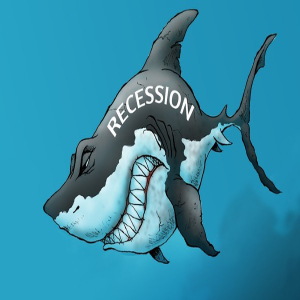Washington schools see record number of homeless students in recent years
Published in News & Features
In recent years, Washington has recorded a record number of students experiencing homelessness, according to data from the Office of Superintendent of Public Instruction (OSPI). Pierce County school districts represent some of the largest populations of students experiencing housing instability.
According to some of the most recent data available from the OSPI, Washington recorded 42,436 homeless students in 2023, more than double the amount the state recorded more than a decade before in 2010.
According to a report from Building Changes, a Washington-based homeless advocacy group, Washington ranks sixth in the nation among states with the most students experiencing homelessness and fifth in the nation for percentage of students experiencing homelessness.
According to the report, 3.8% of the total student population in Washington experienced homelessness during the 2022-23 school year.
The report defines homelessness as living in a shelter, unsheltered, a motel or hotel, or “doubled-up,” meaning they share housing with relatives, friends, or other people.
Roughly three quarters of students experiencing homelessness in Washington during the 2022-2023 school year were considered to be “doubling-up,” according to the report. Roughly 11% were living in shelters, 6% in hotels and motels and 7% percent were considered to be unsheltered.
Unsheltered is defined in the report as “living in abandoned buildings, campgrounds, vehicles, trailer parks, Federal Emergency Management Agency shelters, bus or train stations, substandard or inadequate housing, on the ‘streets,’ or in similar situations.”
Tacoma Public Schools (TPS) has been recognized to have the highest number of McKinney-Vento students in the state.
The McKinney-Vento Homeless Assistance Act is a federal law to protect students experiencing housing instability, and it ensures that homeless children and youth have access to a public education. The McKinney-Vento Act defines homeless children as “individuals who lack a fixed, regular, and adequate nighttime residence.”
According to TPS spokesperson Kathryn McCarthy, the district was serving 2,685 students through McKinney-Vento programming during the 2023-2024 school year. Of those, 414 were considered “unaccompanied youth.”
McCarthy told The News Tribune the district recorded 2,389 students who were experiencing homelessness or considered “unaccompanied youth” during the 2024-2025 school year. Additionally, she said there are 202 students in foster care.
Impacts on student success
According to the report from Building Changes, students experiencing homelessness in Washington in 2023 had a 48 percent attendance rate. Housed students recorded a 71 percent attendance rate during the same year.
In 2023, less than one-quarter of students experiencing homelessness were proficient in English Language Arts, according to the report. This was 29 percentage points lower than the rate for housed students and 12 points lower than the rate for housed low-income students.
Only 15% of students experiencing homelessness were considered to be proficient in math, while 41% of housed students met this standard.
Students experiencing homelessness were suspended from schools at more than double the rate of their housed peers.
In 2023, 63% of students experiencing homelessness graduated within four years, according to the statewide report. This was considerably lower than the 86% rate for all housed students and the 80% rate among housed low-income students.
According to McCarthy, Tacoma Public Schools recorded an 83.2% on-time graduation rate for students experiencing homelessness in 2024, just 10% less than the on-time graduation rate for non-homeless students.
Tacoma Public Schools has a team of support staff focused on McKinney-Vento students.
McCarthy said the team includes: two family liaisons who provide direct support to McKinney-Vento students and families to address immediate needs and school-related concerns; a housing navigator who works to assist families in locating stable housing and navigate housing-related resources; a McKinney-Vento coordinator who oversees program implementation, compliance, and systemic support; and a staff member who focuses on graduation support, post-secondary planning, and removing barriers to academic success for McKinney-Vento students.
“Our McKinney-Vento team focuses on removing barriers within the K–12 public education system to ensure McKinney-Vento and foster care students have equitable access to the same opportunities as their housed peers,” McCarthy told The News Tribune. “Support is individualized based on student needs and often coordinated in partnership with community organizations.”
McCarthy said housing instability can create a number of barriers to student success, including disruptions that impact attendance rates and create educational gaps and create limits to basic needs like food, clothing and healthcare.
She also said housing instability can subject students to trauma and chronic stress that impacts mental health and social development.
In the 2022-23 school year, 46 grants totaling approximately $2.3 million in funding were given to 38 districts to support students experiencing homelessness through either the federal McKinney-Vento Homeless Assistance Act or the state Homeless Student Stability Education Program, according to the report. Clover Park School District, Sumner-Bonney Lake School District, and Tacoma Public Schools were among the districts that received funding.
According to the report from Building Changes, the 38 districts collectively enrolled just less than half of the students experiencing homelessness in the state while the other half of students resided in districts that did not receive grant funds specifically for homelessness efforts.
©2025 The News Tribune (Tacoma, Wash.). Visit at TheNewsTribune.com. Distributed by Tribune Content Agency, LLC.






Comments